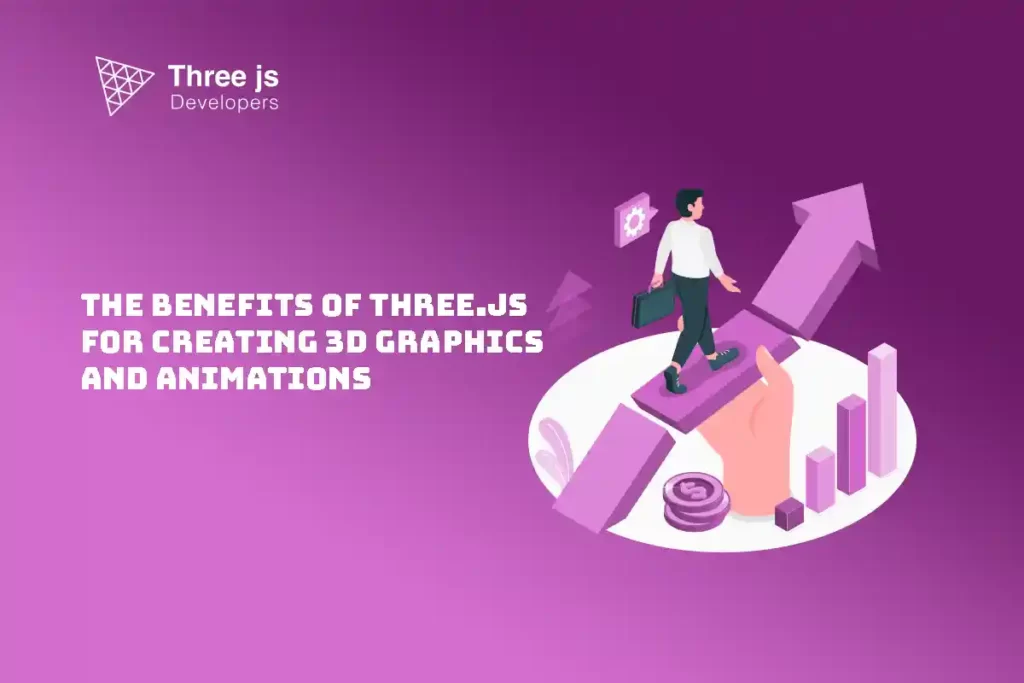In the rapidly evolving field of 3D Web Development, the right tools make all the difference. Three.js stands out, providing many benefits for creating detailed 3D Graphics and captivating 3D Animation. Using Three.js, developers can construct dynamic, interactive web experiences with a three-dimensional twist. This introduction explores the numerous advantages of Three.js, detailing its instrumental role in creating stunning 3D graphics and animations. Utilizing the potential of Three.js, developers can elevate web experiences, achieving unparalleled levels of immersion and interactivity.
The Relationship between Three.js and WebGL
WebGL and Three.js form an instrumental tandem in 3D web development. WebGL, a JavaScript API, paves the way for designing and implementing 3D elements directly within a web browser, eliminating the need for extra plugins. While this opens the door to impressive visual displays, it’s also complex and time-consuming, with a steep learning curve.
This is where Three.js steps in. It is a powerful JavaScript library that wraps around the raw WebGL API. The benefits of Three.js come into full view here, as it simplifies the convolutions of WebGL, turning arduous tasks into more straightforward ones.
Three.js offers a streamlined, higher-tier interface for developing 3D scenes, thus diminishing the coding effort, and enhancing accessibility for developers. To illustrate, crafting a basic 3D cube in WebGL could necessitate hundreds of coding lines. Yet, the same result can be accomplished with Three.js in merely a handful of lines.
From handling mathematical calculations to managing the rendering pipeline, Three.js handles the heavy lifting, freeing developers to focus on crafting engaging 3D Graphics and 3D Animation. The harmonious relationship between Three.js and WebGL thus allows for a more intuitive and efficient approach to 3D web development without compromising creative flexibility and control.
Advantages of Using Three.js for 3D Graphics
Three.js brings a new dimension to web development, breathing life into static web pages with its captivating 3D graphics. This innovation is modifying the aesthetics of websites and applications, turning the user interaction from mere scroll-and-click into a deeply engaging, interactive exploration. By leveraging Three.js, developers can create 3D graphics that are visually impressive and seamlessly integrated into the web architecture, enhancing the overall user interaction.
Ease of Use and Accessibility for Developers
The true beauty of Three.js lies in its user-centric design. Unlike WebGL, which can be complex and intimidating for many, Three.js simplifies 3D web development to an impressive degree. The accessible API of Three.js equips developers to construct detailed 3D scenes, circumventing the detailed technicalities of WebGL. It supplies a clear-cut array of simple functions and methods to comprehend and apply, hence accelerating the developmental timeline. This simplified approach makes 3D web development more accessible and enjoyable.
Extensive Documentation and Active Community
Another significant advantage of Three.js is its comprehensive documentation and vibrant developer community. The library has extensive documentation covering each feature in detail, providing developers with a well-lit path to follow. This vast resource and an active community of knowledgeable and supportive developers means that help is always at hand when you encounter a roadblock. The active community continually contributes to the library, providing updates, new features, and plugins. This dynamic ecosystem makes troubleshooting easier and inspires Three.js developers to explore innovative use cases of Three.js.
Efficient Performance and Optimization Capabilities
Within the 3D graphics landscape, performance holds the highest importance. Three.js delivers on this front by offering excellent rendering performance. It provides robust tools for optimizing 3D graphics, ensuring smoother, more efficient rendering even for intricate, high-detail objects. This optimization capability is especially crucial for complex 3D scenes, where lag and slow rendering can dramatically affect the user experience. With Three.js, you can confidently deliver your users a smooth and visually compelling experience.
Browser Compatibility and Device Support
Three.js demonstrates exceptional versatility with its wide compatibility across modern web browsers and devices. This feature is vital in today’s diverse digital landscape, where users may access content from various devices. Whether on a desktop, smartphone, or tablet, Three.js allows for creating stunning 3D graphics that run smoothly and consistently across platforms. This broad compatibility ensures that users always receive a high-quality, interactive 3D experience, regardless of their device or browser, further consolidating the advantages of using Three.js for 3D graphics and animations.
Advantages of Using Three.js for Creating Animations
Three.js shines in fabricating 3D visuals and as an influential asset for designing engaging animations. Developers can harness its capabilities to build dynamic, interactive 3D scenes that captivate users. The ability to animate 3D objects, characters, and scenes brings an extra dimension to user experiences, making websites and applications more immersive and engaging.
Flexibility in Creating Complex Animations
A key advantage of Three.js in 3D animation lies in its unparalleled flexibility. With Three.js, developers can go beyond the basic motion to create highly detailed, complex animations. From animating individual elements to orchestrating entire 3D scenes, the toolkit provided by Three.js offers the versatility needed to achieve a wide array of effects. This adaptability boosts website and application interactivity, empowering developers to design user experiences that are captivating, immersive, and custom-fitted to their target users.
Support for a Variety of Animation Methods
One of the highlights of Three.js is its support for a diverse range of animation techniques. Whether it’s skeletal animations for character movement, morph target animations for subtle transitions, or particle systems for visual effects, Three.js can handle it all. This broad range of capabilities means developers can choose the best method for their specific needs, enhancing creativity and precision in animation creation. Three.js’s ability to accommodate a variety of animation techniques empowers developers to venture into unexplored territories, redefining the limits of 3D web experiences.
Blending and Sequencing Animations with Three.js
Another significant advantage of Three.js is its ability to sequence and blend animations, producing a smooth, seamless flow of motion. This means developers can layer multiple animations, control their timing, and orchestrate complex sequences to create a more fluid, realistic experience. Blending and sequenced animations can bring 3D characters and scenes to life, adding depth and dynamism to the user experience. This can transform a website or application from a static display into a living, breathing digital environment, creating more prosperous, engaging user experiences.
Conclusion
The advent of 3D graphics and animations has reshaped the contours of contemporary web development. Three.js has emerged as a powerful ally for developers, making creating interactive 3D graphics and animations simpler and more accessible. Due to its user-friendly nature, substantial community backing, unmatched performance, and broad compatibility, Three.js redefines how we engage with and perceive the web. Embrace the third dimension of web development with Three.js, and bring your digital experiences to life.



